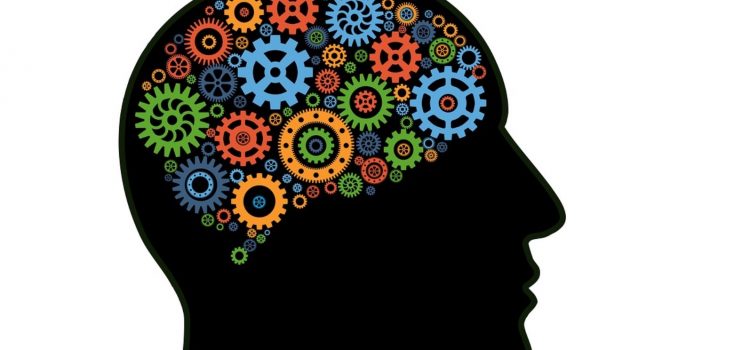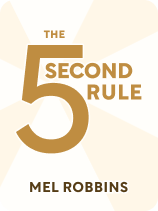

This article is an excerpt from the Shortform book guide to "The 5 Second Rule" by Mel Robbins. Shortform has the world's best summaries and analyses of books you should be reading.
Like this article? Sign up for a free trial here.
How does your brain detect patterns? What’s the science behind the 5 Second Rule?
In The 5 Second Rule, Mel Robbins discusses the science behind her 5 Second Rule. She answers why it has such a powerful effect on the brain, and it all has to do with how the brain recognizes patterns.
Continue reading to learn how brain patterns affect your ability to fight procrastination, hesitation, and harmful impulses.
Using the Prefrontal Cortex to Challenge Patterns
Robbins argues that counting backward helps us to take control and live more intentionally by shifting the brain away from our habitual thinking patterns. She claims that counting backward activates the prefrontal cortex: the part of the brain that deals with purposeful action, focus, and instigating change. Once that part of the brain is activated, it’s easier for us to focus on challenging our normal patterns.
Robbins argues that challenging our brain patterns is necessary because most of us are habitually hesitant to act. Hesitating is problematic because it gives us time to consider how we feel about the choices we might make and actions we might take. Then, we let these feelings control our decisions. Robbins claims that even if we logically know that completing a task would benefit us in the long run, when we have time to consider how we feel about that task, we end up abandoning it if it doesn’t feel easy, pleasurable, or comfortable.
For example, if you tend to procrastinate doing your laundry, you likely know that you’ll feel better once it’s complete and you have all of your clean clothes to wear. But, if you stop to think about how you feel about doing your laundry (it’s boring, carrying the heavy hamper is a struggle, and hanging the washing out to dry is a hassle), you’re likely to avoid it.
| Comparing The 5 Second Rule to The Willpower Instinct In The Willpower Instinct, Kelly McGonigal also discusses the impact of the prefrontal cortex on willpower and impulsiveness, as well as the impact of hesitation on our choices. McGonigal explains that some people are born with a more developed prefrontal cortex than others, making it easier for them to disrupt impulsive thought patterns. However, she notes that it’s also possible to train your prefrontal cortex. Studies show that regularly meditating for just five minutes a day results in increased blood flow and more gray matter in the prefrontal cortex, directly strengthening your willpower “muscle.” This would make the 5 Second Rule, which flexes that muscle, more effective. If you don’t want to meditate, there are plenty of other habits you can build to preserve the willpower you need to make wiser decisions. Both sufficient sleep and regular exercise help your prefrontal cortex operate at peak efficiency. Unlike Robbins, McGonigal doesn’t see hesitating before taking action as a bad thing because hesitation can prevent the neurotransmitter dopamine from leading us astray. McGonigal explains that when we see attractive stimuli—for instance, a delicious-looking cupcake, or in the case of a smoker, a pack of cigarettes—the brain releases dopamine. This makes us desire the stimuli, as the brain tells us that obtaining it will trigger a satisfying “reward.” However, only some of the attractive stimuli that release dopamine will truly produce the satisfaction we’re looking for—smoking a cigarette, for instance, may feel appealing beforehand but leave you with feelings of emptiness and dissatisfaction afterward. Therefore, if you hesitate before acting and consider how you’ll feel after following your impulsive thought pattern, and you come to the conclusion that following that impulse will leave you unsatisfied, you may gain the motivation you need to make the healthy choice. |
Creating New Patterns
The Rule not only primes your brain to change your hesitation habit but also allows you to make quick action your new habit, replacing hesitation and doubt. Robbins argues that if you want to break a bad habit, then you have to replace it with something—and acting on the Rule serves as that new, positive habit.
(Shortform note: In The Power of Habit, Charles Duhigg elaborates that when you’re replacing a bad habit with a new, positive one, you need to identify the exact reward you were craving with your old habit. That way, you can make sure that your new habit satisfies this same need in a healthier way. For instance, if you realize that you always hesitate before taking action because it gives you the satisfaction of feeling like you’re making a wise choice, make sure your new habit gives you this same feeling: Repeatedly remind yourself that acting without hesitation is a wise choice.)

———End of Preview———
Like what you just read? Read the rest of the world's best book summary and analysis of Mel Robbins's "The 5 Second Rule" at Shortform.
Here's what you'll find in our full The 5 Second Rule summary:
- Why counting down from five to one will help you assert agency over your life
- The different ways you can use the 5-Second Rule
- How to figure out what your passions are and work toward them






